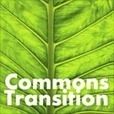Extracted from an article by Nikos A. Salingaros. PAVEMENTS AND HIERARCHY Architecture has in the past felt a need for pavements that are either patterned, or that embody figurative art. Our perception of space is founded on a connection with the ground via design. In creating an artificial built environment to house themselves and their... Continue reading →
Research and publish the best content.
Get Started for FREE
Sign up with Facebook Sign up with X
I don't have a Facebook or a X account
Already have an account: Login
on peer-to-peer dynamics in politics, the economy and organizations
Curated by
jean lievens
 Your new post is loading... Your new post is loading...
|
|













COLLECTIVE INTELLIGENCE GUEST POST P2P ARCHITECTURE AND URBANISM P2P INFRASTRUCTURES P2P SCIENCE